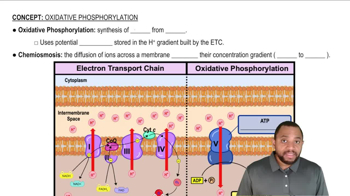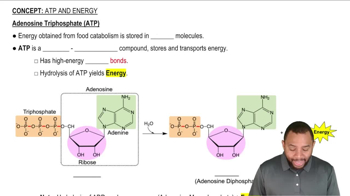Textbook Question
What supplies the energy to drive oxidative phosphorylation?
1315
views
 Verified step by step guidance
Verified step by step guidance Verified video answer for a similar problem:
Verified video answer for a similar problem:



 2:37m
2:37mMaster Oxidative Phosphorylation Concept 1 with a bite sized video explanation from Jules
Start learning